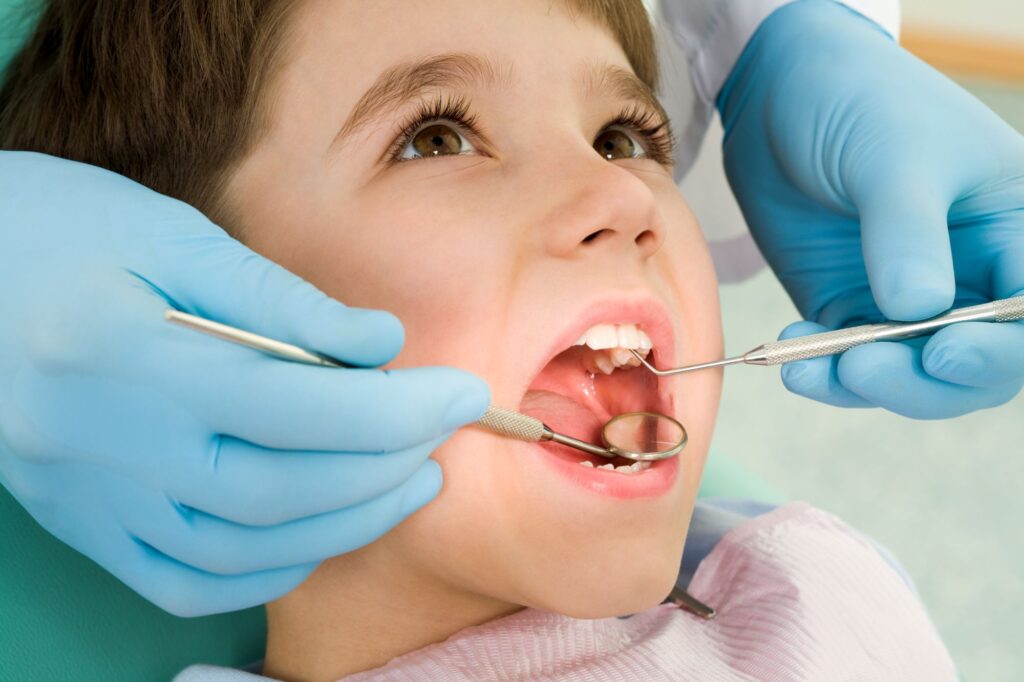When it comes to orthodontics, there is often a difference between pediatric orthodontics and other types. This guide will discuss what makes it unique. If you’re a parent with a child that may need such treatment, you can keep reading to know more about it.
We’ll discuss what a pediatric orthodontist does and how they can be able to treat a child’s needs. As a parent, you want to know what the best options are. Your child desires a straighter, better looking smile.
It’s also important that some alternatives may exist. Especially if your child’s orthodontic situation is not so complex. With that in mind, let’s talk more about pediatric orthodontics and what makes them stand out.
What does a pediatric orthodontist do?
Like the name itself, this orthodontist is a specialist in helping young children. It may be a similar age bracket for pediatric dentists, which can range from six months to 18 years or age. However, it’s unlikely that a child below the age of one may need to see an orthodontist.
If you’re starting your children early for regular dental visits, this can be a huge plus. Over time, your dentist may notice dental issues that can be caught early enough. Meaning that pediatric orthodontic treatment can be possible and can take a shorter amount of time.
If a dentist makes a referral to an orthodontist, you may wonder who is the “best pediatric orthodontist near me”. If you live in the Philadelphia area, all you need to do is plug into Google “orthodontist in Philadelphia”.
How are pediatric orthodontics unique?
Let’s take a look at a few ways pediatric orthodontics are unique compared to other specialists in the same field:
The timing is different
Because children’s teeth move faster and easier, the treatment length will differ compared to older individuals. The treatment itself will be more efficient and effective. Once again, catching such orthodontic issues early enough can lead to a shorter treatment period.
Not only that, they can prevent serious issues from developing over time. The sooner your dentist catches something, the better. If they refer you to an orthodontist, act on it as soon as possible.
The treatment is more customized
A child’s orthodontic treatment is customized to fit their specific needs. The pediatric orthodontist will also need to create a plan based on several factors. This includes the age of the patient, the stage of development that they are in (dental and skeletal), or if they are dealing with any underlying medical conditions that may complicate the treatment.
During the consultation process, it’s important to be as accurate and truthful as possible. The orthodontist will want to put together the best treatment that will be effective. The more pinpoint accurate it is, the better.
Not only that, you don’t want to prevent any complications from happening. Especially if it involves an underlying medical condition your child might have.
Specialized appliances are used
Pediatric orthodontists will use appliances specifically designed for pediatric patients. These will be based on your child’s teeth and jaws. This also includes appliances that can be removable such as aligners.
Please note that some appliances may not be useful if the issue is too complex. For example, an Invisalign treatment (or similar) won’t be the appropriate treatment if your child’s orthodontic issue is seen as too complex.
That’s why a consultation is often done before any treatment begins. Accuracy counts in terms of treatment. At the same time, the orthodontist will be able to determine the complexity of the treatment and decide what course of action to take.
Each child is different in terms of their orthodontic needs. Your child’s may be less complex than others (or vice versa). You won’t be able to know that without visiting an orthodontic pediatrician first.
They encourage parental involvement
As a parent, you want to make sure your child is getting the best treatment they need. You can use them for motivation and additional support. Especially when they need to follow treatments recommended and outlined by the orthodontist.
Pediatric orthodontists always work closely with parents to make sure this happens. In fact, it should never be a one way street. The orthodontist is the expert and authority when it comes to your child’s dental needs.
As a parent, you are welcome to ask questions regarding the treatment plan. At the same time, you are also ensuring that your child is following said treatment plans. Be sure to make notes and communicate regularly with your child’s pediatric orthodontist.
They understand the psychological considerations
A child may need to wear orthodontic appliances. With that in mind, they also understand what could be going through the child’s mind. They may feel self-conscious about the appliances they wear or any possible stigmas that may arise.
A pediatric orthodontist is not a child psychology expert. But they have treated many patients over the years to understand the common issue. A child may feel like they are different from the others because of the appliances they are wearing.
As a parent, you may also empathize with your child. However, you can help them get into the mindset that they may need such treatment including wearing certain appliances. Braces may be one of them.
It’s important that you give them a great deal of support and let them know that it’s OK to be different from anyone else. And that’s the truth.
Not everyone is the same.
This is the case for each child and their orthodontic needs.
Final Thoughts
If you are a parent with a child who needs a pediatric orthodontist, use this guide as a reference. It may take a dentist’s examination and referral to help get you started. From there, you can work with an orthodontist that specializes in working with kids.
From there, they’ll be able to assess the situation. Then, they’ll put together a specialized treatment plan for your child. To make it more effective, make sure your child follows that plan so it can be successful.




